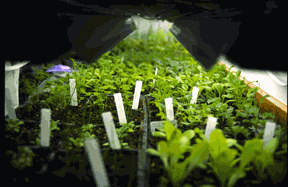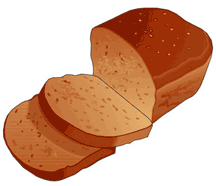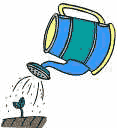
What Seedlings Really Want
Basic steps for raising seedlings (like kids, they flourish with a
healthy upbringing)
By Marion Owen, Fearless Weeder
for PlanTea, Inc. and
Co-author of Chicken Soup for the Gardener's Soul
FEATURE ARTICLE:

Tom Hanks' "Power of Four" solution
More good stuff:
Who is Marion Owen?
FAQs about PlanTea
Search Marion's articles, tips and recipes
Why grow organic?
News and press releases
Read love letters
How to link to this site
Need a speaker?
How to contact Marion
Visiting Alaska?
Come to Kodiak Island!
Go to home page

Marion's UpBeet Gardener
Newsletter has been
replaced by Marion's blog
which you can find at:
www.marionowen.wordpress.com
 At the very moment seeds germinate, they need extra attention. It's just like raising children. In this article we'll learn what your seedlings need to grow up to be healthy and respectable "kids" including how to compare soil to a slice of bread. Trust me on this one...
At the very moment seeds germinate, they need extra attention. It's just like raising children. In this article we'll learn what your seedlings need to grow up to be healthy and respectable "kids" including how to compare soil to a slice of bread. Trust me on this one...
Understanding what seedlings need is the first step toward a successful
garden, whether you grow your own vegetable, herb or flower seedlings, or purchase them from a garden center as bedding
plants.
Darn. If only we knew what plants were thinking, similar to what Mel Gibson mastered
in the movie "What Women Want." But until people-plant communications improve,
here is the next best thing: Tried-and-true seed-growing tips for beginners
as well as polished green thumbs, starting with...
Let there be light
See that photo above? Now that's a healthy batch of seedlings! And they're loving the light. Lack
of adequate light however, results in pale, leggy and weak seedlings, which is a huge disappointment
to many gardeners. Because seedlings require more intense light than full-grown
plants, 14 to 16 hours a day is ideal.
Here's another tip: While windowsills are handy nurseries for raising
plants, they can do more harm than good. Direct sun and cold air flowing
down a window pane can do in a seedling. If you must use windowsills,
supplement the light with reflectors and rotate plants every two days so
light reaches all sides.

Seedlings need 14 to 16 hours of light per day
Better still, raise your seedlings under fluorescent lights. You don't need an expensive setup because shop lights work just fine. Adjust the height of your lights so they remain about four inches above the tops of the seedlings.

Seedlings growing under 40-watt fluorescent lights (hanging from the top).
For best results, keep lights 4 inches above tops of seedlings.
Keep
it moist--do the bread test
Water is the highway that delivers nutrients, and seedlings need a steady supply of it. Keep soil moist, not soggy, and never, never, NEVER let it dry out. Check seedlings daily, mist them often and use room temperature water. Later, as seedlings mature, try to water from the bottom to encourage roots to "reach for it."

TIP: Drying soil is hard to detect visually, so do the bread test: The soil's surface should feel as moist as a slice of fresh bread. For another check, lift containers to sense their weight. Remember, light means dry.
Take their temperature
Most seeds germinate, and seedlings thrive, in a temperature range of 65 to 75 degrees F. Doc and Katy Abraham refined it further with their own experience. "The secret is to maintain 72 degrees, day and night." Exceptions include lettuce, parsley, cabbage and other cool weather plants that prefer cooler growing conditions. Once they reach two to three inches in height, they prefer cooler temperatures, say 50 to 60 degrees (or even less in some climates).
|
- - -
- - - - - - - - - - - - - - - - - |
Hey, we need a little air in here!
Proper ventilation is critical for healthy seedlings, helping them breathe by circulating carbon dioxide and oxygen. Moving air also prevents damping-off disease and it keeps pests at bay. A small fan is all you need to strengthen stems and prepare them for real outdoor breezes.
|
- - -
- - - - - - - - - - - - - - - - - |
No junk food served here
Just like children, a healthy diet is important for proper development. When seedlings reach about two inches tall and have developed their second set of leaves (also called their true leaves), they appreciate small doses of plant food. Use an organic kelp-fish emulsion, kelp or compost tea, or a balanced plant food blend such as PlanTea.
Time to plant outside? Wait for a cloudy day
 Before transplanting seedlings in the garden, they need
to adjust to the great outdoors. This gradual process, called hardening-off,
takes about a week. On Day One, set your seedlings outside in a shady,
windfree area. After 2 or 3 hours, bring them back inside. Don't rush
things. These are couch-potato seedlings and they're not used to the big
outdoors. Increase the outdoor time gradually over the next few days.
Before transplanting seedlings in the garden, they need
to adjust to the great outdoors. This gradual process, called hardening-off,
takes about a week. On Day One, set your seedlings outside in a shady,
windfree area. After 2 or 3 hours, bring them back inside. Don't rush
things. These are couch-potato seedlings and they're not used to the big
outdoors. Increase the outdoor time gradually over the next few days.
Transplant seedlings on a cool, overcast day, or in the early evening. Bright, sunny, warm days are a recipe for failure. After transplanting, keep soil damp until plants are established. Shield seedlings from wind, frost, heavy rain and hot sun with mini-tents, row covers or plastic milk jugs, minus their bottoms.

I'll finish with a word of encouragement: For those of you who never advanced beyond planting sunflower seeds in milk cartons during grade school, talk show host Ruth Page says you shouldn't fret. "If you've never started seeds don't worry too much about it. Remember, nature has designed them to want to grow. You and the garden seeds have exactly the same goal... what could be more reassuring?"
I hope this article was helpful. Cheers and blessings to you,
![]()
P.S. You might also enjoy these articles I selected from my collection:
Seeding Is Believing! A complet (and easy!) step-by-step guide for growing your own bedding plants
Aspirin Water Aids Plants: Research, interview and links
Why Grow Your Own (Reason #25): Even just a teensy-weensy bit
Chocolate Beet Brownies: They can't be beat! All about beets and a recipe to fool skeptics

Thanks for visiting and please stop by again. I'll put the coffee on!
Meet Marion Owen /// Learn about PlanTea /// Online Catalog /// Articles, Tips, Recipes /// Get free UpBeet Gardener newsletter /// Read current issue /// Listen to radio show /// Read news and press releases /// More resources and links /// Learn why 'grow organic?' /// View guidelines for retailers /// Read love letters /// Book Marion as a speaker /// Site map /// How to link to us /// Contact us /// Go to home page
PlanTea: The organic plant food in tea bags. http://www.plantea.com
Copyright ©1996 to present: PlanTea, Inc. All Rights Reserved. PO Box 1980, Kodiak, AK 99615-1980 USA
Questions or comments? marion@plantea.com Phone: Toll Free: 1-800-253-6331 (US and Canada); 907-486-2500